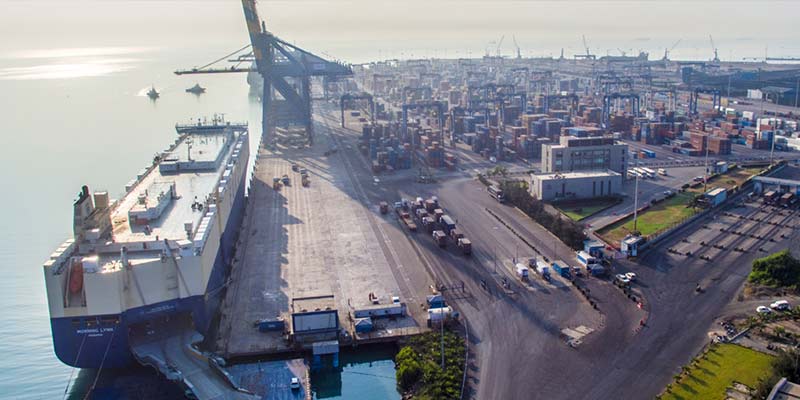- India
- Jul 17
Explainer / Sagarmala programme
As many as 10,000 jobs have been created through projects initiated under Sagarmala by the shipping ministry in the past three years, Union Minister Mansukh Lal Mandaviya told the Rajya Sabha in a written reply.
He said 334 projects have been initiated till May by the ministry under Sagarmala, including 75 each in Maharashtra and Tamil Nadu, 33 in West Bengal and 32 in Gujarat.
There has been an increase of 54 per cent in the cargo carried through coastal shipping and navigable waterways since the inception of the Sagarmala programme, he added.
During her Budget speech, Finance Minister Nirmala Sitharaman had asserted the importance of the Sagarmala project.
“The government has given a massive push to all forms of physical connectivity through the Pradhan Mantri Gram Sadak Yojana, industrial corridors, dedicated freight corridors, Bharatmala and Sagarmala projects, Jal Marg Vikas and UDAN schemes. Bharatmala would help develop national road corridors and highways, while Sagarmala would enhance port connectivity, modernisation and port-linked industrialisation,” she said.
Background
The maritime sector has been the backbone of the country’s trade and has grown manifold over the years. To harness India’s 7,500 km long coastline, 14,500 km of potentially navigable waterways and strategic location on key international maritime trade routes, the government launched the Sagarmala programme, which aims to promote port-led development in the country. It was approved by the Union Cabinet on March 25, 2015.
As part of the programme, a national perspective plan (NPP) for the comprehensive development of India’s coastline and maritime sector was released in 2016.
Role of ports in the economy
Ports play an important role in the overall economic development of the country.
Approximately 95 per cent of India’s merchandise trade (by volume) passes through sea ports. Many ports in India are evolving into specialised centres of economic activities and services and are vital to sustain future economic growth of the country such as JNPT, Mundra Port, Sikka Port and Hazira Port.
However, more than 90 per cent of coal currently moves via railways. The constraints on connectivity and sub-optimal modal mix results in higher logistics cost thereby affecting the manufacturing sector and export competitiveness.
China has a lower container exporting cost than India due to lower lead distances. The presence of major manufacturing and industrial zones in coastal regions in China, which were developed as part of the port-led policy of the government, is the main reason for lower lead distances.
Any programme for port-led development needs to consider the above mentioned factors to effectively harness the potential of India’s long coastline.
Gujarat has been a pioneer in adopting the strategy of port-led development, with significant results. While in the 1980s the state grew at only 5.08 per cent per year (national average was 5.47 per cent), this accelerated to 8.15 per cent per annum in the 1990s (all India average 6.98 per cent) and subsequently to more than 10 per cent per annum, substantially benefiting from the port-led development model.
Main challenges
The operational efficiency of Indian ports has improved over the years, but still lags behind the global average. Turnaround time (TAT) at major ports was approximately four days in 2014-15, whereas the global average benchmark is one-two days. Some of the private sector ports in India like Mundra and Gangavaram have been able to achieve a turnaround time of around two days.
Last-mile connectivity to the ports is one of the major constraints in smooth movement of cargo to/from the hinterland. Around 87 per cent of Indian freight uses either road or rail for transportation of goods. A significant share of this cargo experiences “idle time” during its transit to the ports due to capacity constraints on highways and railway lines connecting ports to production and consumption centres.
Although water-borne transport is much safer, cheaper and cleaner compared to other modes of transportation, it accounts for less than 6 per cent of India’s modal split. By comparison, coastal and inland water transportation contribute to 47 per cent of China’s freight modal mix, while in Japan and the US, this share is 34 per cent and 12.4 per cent, respectively. Significant savings can be achieved by shifting movement of industrial commodities like coal, iron ore, cement and steel to coastal and inland waterways.
Sagarmala
The aim of the Sagarmala programme is to reduce the logistics costs for exports and imports (exim) and domestic trade with minimal infrastructure investment. This includes…
* Reducing the cost of transporting domestic cargo through optimising modal mix.
* Lowering logistics costs of bulk commodities by locating future industrial capacities near the coast.
* Improving export competitiveness by developing port proximate discrete manufacturing clusters.
* Optimising time/cost of exim container movement.
Programme components:
Port modernisation and new port development: Removing bottlenecks and expanding the capacity of existing ports and development of new greenfield ports.
Port connectivity enhancement: Enhancing the connectivity of ports to the hinterland, optimising cost and time of cargo movement through multi-modal logistics solutions including domestic waterways (inland water transport and coastal shipping).
Port-linked industrialisation: Developing port-proximate industrial clusters and coastal economic zones to reduce logistics cost and time of exim and domestic cargo.
Coastal community development: Promoting sustainable development of coastal communities through skill development and livelihood generation activities, fisheries development, coastal tourism, etc.
The programme aims to double the share of domestic waterways (inland and coastal) in the modal mix, generate logistic cost savings of Rs 35,000-40,000 crore per annum, boost merchandise exports by $110 billion and enable the creation of 1 crore new jobs, including 40 lakh direct jobs, in 10 years.
More than 576 projects with an estimated cost of Rs 8.7 lakh crore have been identified for implementation over the next 20 years.
Of the 576 projects identified, 69 projects worth more than Rs 13,500 crore have already been completed and another 424 projects worth over Rs 4.1 lakh crore are under various stages of implementation and development.

